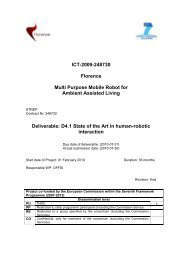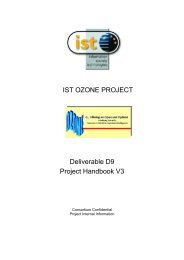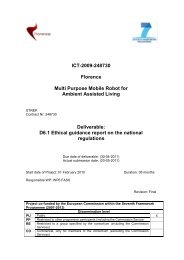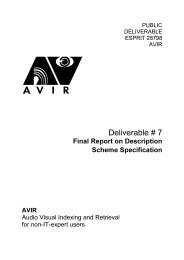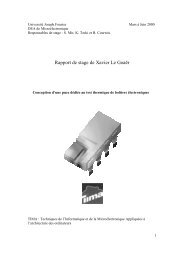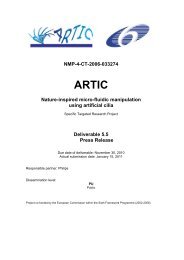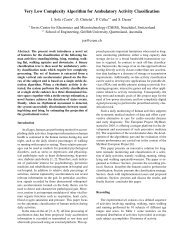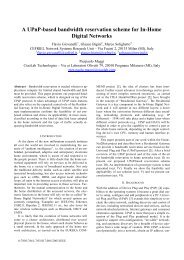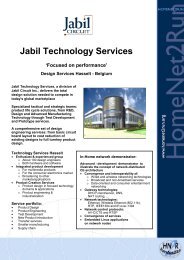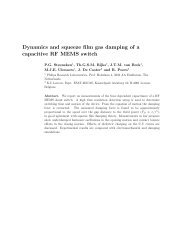User Interface Service Software Developerís Guide - Hitech Projects
User Interface Service Software Developerís Guide - Hitech Projects
User Interface Service Software Developerís Guide - Hitech Projects
You also want an ePaper? Increase the reach of your titles
YUMPU automatically turns print PDFs into web optimized ePapers that Google loves.
January 2008<br />
Public<br />
3.10 Assessment GUI <strong>Service</strong><br />
3.10.1 <strong>User</strong> Acceptance<br />
As part of the work package 4.7.2 a GUI mock-up has been developed. The goal of this mockup<br />
was to find out how the menu structure of a graphical user interface shall look like and how<br />
people interact with GUIs that follow different navigation strategies.<br />
To this end, we built three mock-ups that all represent a different way how a menu structure is<br />
logically generated. Each mock-up represents a menu structure for the same simple home that<br />
consists of several rooms (bath room, kitchen, hall, living room, bedroom) with various devices<br />
(e.g., cooker, TV set, radio, windows, light). The difference between the mock-ups were that<br />
the first two mock-ups share a device oriented view while the last mock-up is function oriented.<br />
That is, in the last mock-up the device borders are dissolved brining functions of different<br />
devices onto a single menu page.<br />
In order to find out how user operate with these different kind of menu systems, the mock-up<br />
were implemented as Java applications that can be executed on a PC. The test user were<br />
assigned a set of tasks they had to execute. The time required by the various users were<br />
recorded. Further, the user had to fill out a questionnaire.<br />
The current section is a summary of the deliverable for work package 4.7.2. Please refer to<br />
this document for further details about the user acceptance study.<br />
3.10.1.1 Study Methodology and Hypothesis<br />
Our tests aimed at analyzing the effectiveness of different menu structure from a use<br />
perspective. That is, the outcome of the tests is expected to answer crucial questions<br />
regarding user preferences on menu structures. To obtain the results, users were confronted<br />
with the mock-ups and asked to perform a set of task. The results of this user test will feed into<br />
development of the user interface services.<br />
One major goal of the test was to find out, how people would like to have their menu structures<br />
logically laid out. Especially, we want to check out, whether people prefer a device/room<br />
oriented view on the devices or prefer to focus on the functions instead of devices.<br />
Before the tests, we had the following expectations:<br />
− It is expected that users prefer different user interfaces and that the preference is<br />
somehow equally distributed among the menu candidates. I.e., we expect that there is<br />
no single “one approach fits all” solution<br />
− We expect that user become faster when they become used to the specific way a<br />
menu structure is logically build.<br />
− We expect that user will prefer those menu structures which they are able to reach<br />
their goal in less time.<br />
3.10.1.2 Test apparatus<br />
There were three mock-ups created for the same virtual apartment. The mock-ups were<br />
implemented as Java based applications. Hence, user were able to operate it via a mouse.<br />
3.10.1.2.1 Mock-up 1<br />
The first mock-up implemented a menu structure where at the first menu level the user had to<br />
choose the appropriate room, then a device and finally a function of the device. Depending on<br />
the device type, they could then directly select a specific function or had to choose between<br />
Amigo IST-2004-004182 106/114



